Abstract
In Belgium’s vegetable production, the latest data for 2022 shows that lettuce recorded the highest yield, reaching 601 kt. Belgium’s warm climate and fertile soil make it a thriving producer of a wide variety of vegetables, including lettuce. The increase in lettuce production in particular is due to growing demand both domestically and overseas. Other popular vegetables include tomatoes and cabbage, and production of these vegetables is also on the rise in response to health-conscious consumers. In terms of land use, the cultivation area for lettuce and tomatoes is being expanded, and efforts are being made to introduce efficient production systems. Tomatoes are produced for different purposes, such as for eating raw or for processing, and production systems have been established according to each purpose. This trend can be seen as part of Belgium’s agricultural policy, which aims to achieve sustainable agriculture and a stable supply for export.
Production (by vegetables)
Looking at data from 2000 to 2022 on vegetable production in Belgium, lettuce recorded its highest ever production volume of 601kt in 2022, reaching a peak of 100% overall. This growth is likely due to growing health consciousness and increased demand for lettuce. Over the past 20 years, the overall vegetable production in Belgium has shown a steady increase, with lettuce, tomatoes and cabbage being particularly important production items. Increased lettuce production is driven by global warming and improved production techniques, with greenhouse cultivation and intensive farming in Belgium contributing factors. Thanks to strengthened production systems, exports have expanded in recent years, and more efficient cultivation is being carried out to meet the demand for lettuce. Belgian agriculture continues to develop in response to both domestic and international demand, while also incorporating sustainable agricultural practices.
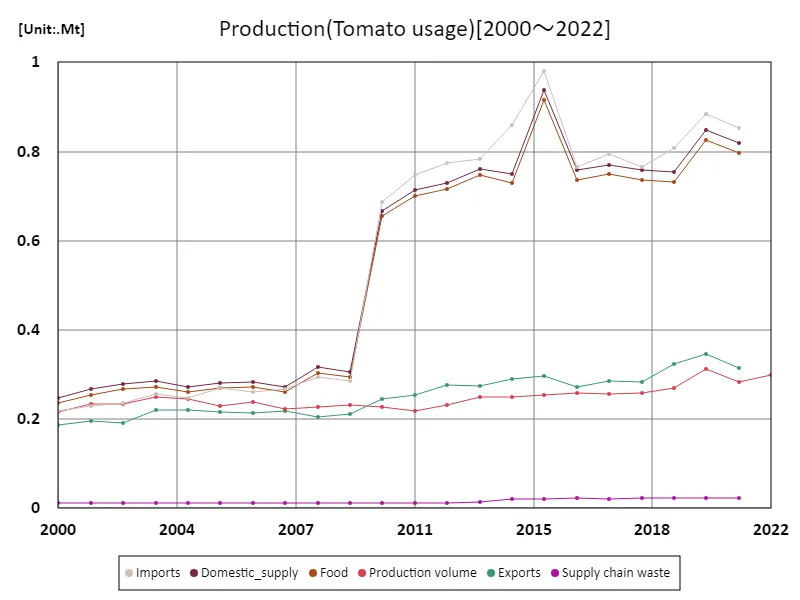

The maximum is 980kt[2015] of Imports, and the current value is about 86.9%
Yield(by vegetable)
In terms of vegetable yield (t/ha) in Belgium, data from 2000 to 2022 shows that eggplant recorded the highest yield of 620t/ha in 2013, but has since been on a downward trend, remaining at 74.2% of its peak in 2022. This decrease is thought to be due to changes in cultivation area and yield, as well as the effects of climate change and disease. As for vegetables other than eggplant, the yields of tomatoes and lettuce also fluctuate from year to year, and the development of intensive cultivation and greenhouse technology in particular is supporting the yields of some vegetables. Overall, changes in growing conditions due to global warming are having an impact, and there is an increasing trend in Belgian agriculture to seek out sustainable production whilst also pursuing efficiency. Under these circumstances, while there is a possibility that eggplant production efficiency can be improved, climate risk management and the introduction of new technologies will remain challenges for the future.
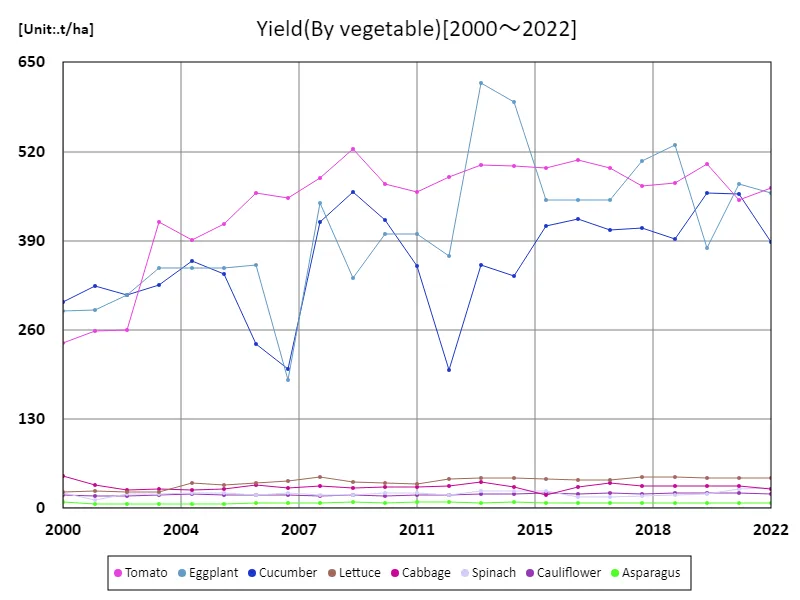

The maximum is 620t/ha[2013] of Eggplant, and the current value is about 74.2%
Land use (by vegetables)
Land use data for vegetable cultivation in Belgium for 2022 shows that lettuce stands out with the largest area at 13.4 kha, with an overall average of 3.65 kha and a total of 29.2 kha. The large area of lettuce cultivated is believed to be due to high demand both at home and abroad, and it is positioned as an important crop in Belgian agriculture. The area cultivated for other vegetables is also diverse, with items with stable demand, such as tomatoes and cabbage, taking up a relatively large amount of land. Belgium has advanced greenhouse cultivation technology and efficient cultivation methods, and has focused on improving yields on limited areas. This promotes sustainable agriculture that maintains productivity while also being mindful of the environment. It is expected that land use will continue to be optimized in the future while responding to fluctuations in demand and climate change.
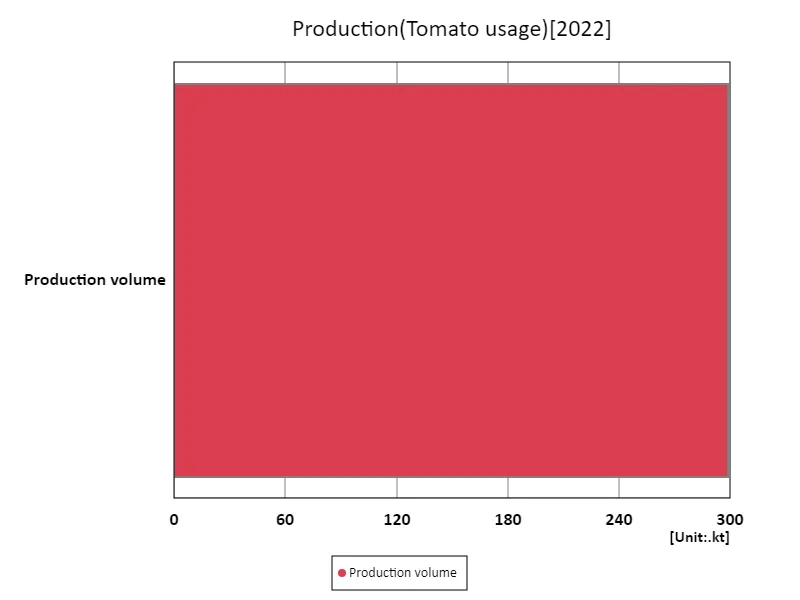

The maximum is 299kt of Production volume, the average is 299kt, and the total is 299kt
Tomato usage
The latest data on Belgian tomatoes, from the year 2000, shows that imports reached a peak of 980kt, which is currently at its peak. In addition to domestic production, Belgium also relies on imports, and imports of tomatoes in particular are on the rise due to stable demand both at home and abroad. This is due to active distribution on the European market as a whole, and because tomatoes are widely used for both fresh consumption and processing, import volumes are adjusted according to demand. Domestic tomato cultivation is also on the rise, but imports are helping to ensure a stable supply and meet demand. In the future, it is expected that the trend in Belgium will continue to be to establish a sustainable supply system while striking a balance between imports and domestic production in order to ensure quality and a stable supply.
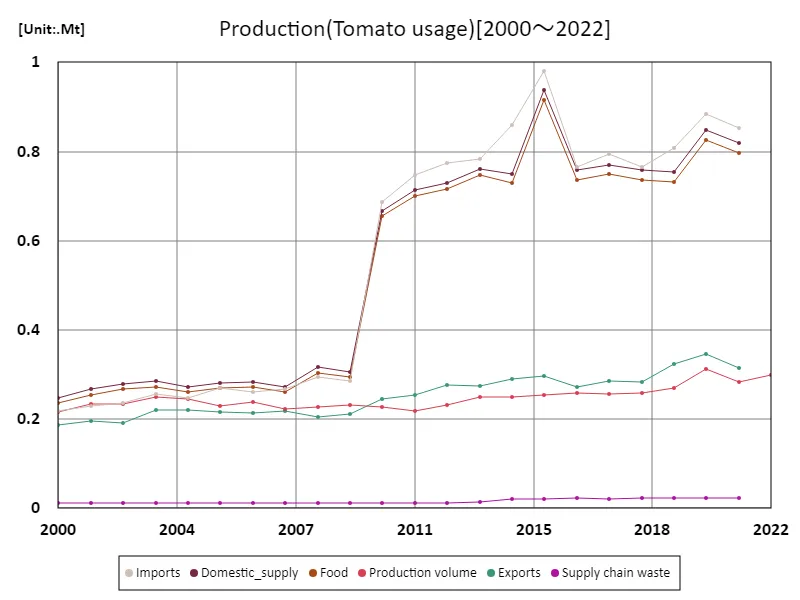

The maximum is 980kt[2015] of Imports, and the current value is about 86.9%
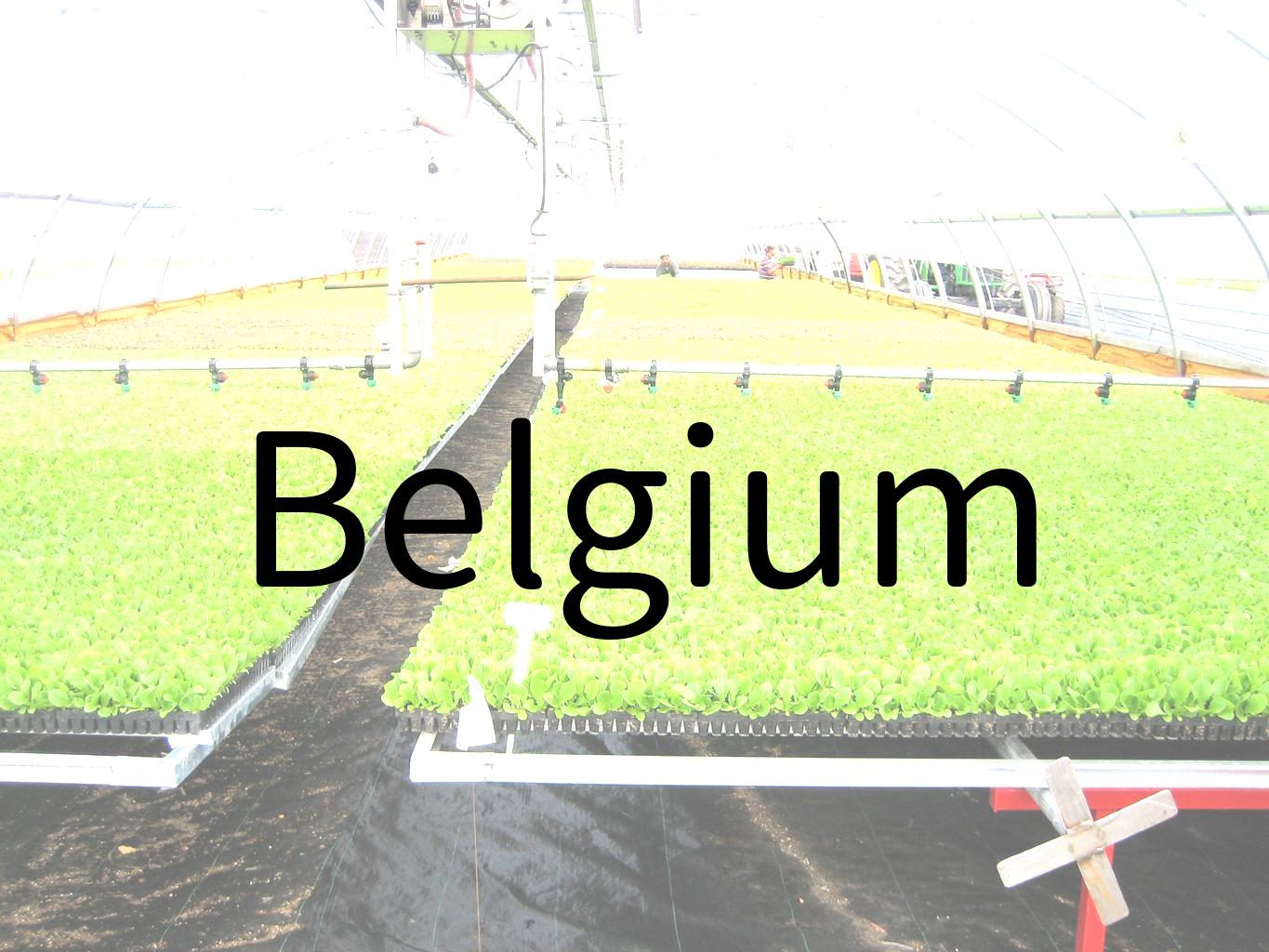


Comments